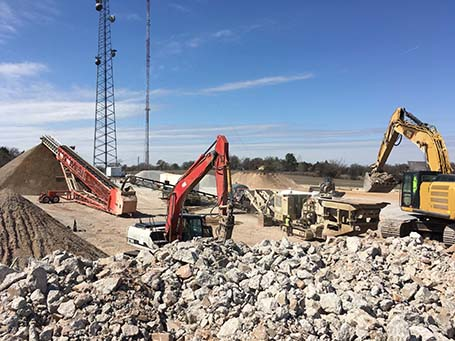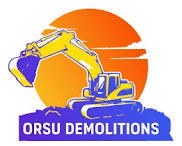Demolition contractors in Dubai

Demolition work is an essential part of urban development and infrastructure evolution, involving the dismantling, deconstruction, and removal of buildings or structures that have reached the end of their life cycle. This complex process requires a blend of advanced technology, precise planning, strict safety measures, and environmental responsibility.
Whether it’s a commercial high-rise, an industrial complex, or a residential property, demolition work paves the way for new construction and urban renewal. Here’s a closer look at what demolition work entails, why it’s important, and the methods and practices that ensure a successful and safe demolition project.
Key Objectives of Demolition Work
Site Clearance for New Development:
One of the primary purposes of demolition work is to clear a site for new construction. Demolition paves the way for modernization, revitalization, and urban development, allowing land to be repurposed for housing, commercial buildings, or public spaces.
Removal of Unsafe Structures:
Aging structures or buildings that no longer meet safety standards can pose significant risks to communities. Demolition work safely removes these unsafe buildings, reducing hazards and making way for more secure and structurally sound developments.
Environmental Cleanup and Decontamination:
In some cases, demolition work involves the safe removal of hazardous materials, such as asbestos or lead, from older buildings. This ensures a healthier environment for the community and makes the site safe for future construction.
Techniques Used in Demolition Work
Demolition work involves several techniques, each suited to different types of structures and project requirements. Common demolition techniques include:
Controlled Demolition:
Controlled demolition is a methodical and precise approach that uses specialized equipment to carefully dismantle a structure. This technique is commonly used in urban areas where nearby buildings must be protected from damage.
High-Reach Demolition:
High-reach demolition uses long-arm excavators to safely access and dismantle the upper parts of tall buildings. This technique is ideal for high-rise demolitions and ensures that the structure can be taken down layer by layer, reducing risk and debris.
Implosion:
For large structures like stadiums or towers, implosion is sometimes used. This technique involves strategically placing explosives to collapse the building inward. Implosion requires precise planning, as it’s typically performed in urban areas where the debris must fall within a controlled radius.
Selective Demolition:
Selective demolition, or “deconstruction,” is used when specific parts of a building need to be preserved or reused. It’s a sustainable approach that allows for the recovery of valuable materials, reducing waste and supporting recycling.
Interior Demolition:
Interior demolition involves dismantling only the internal parts of a building, such as walls, floors, and ceilings, while preserving the exterior structure. This is often done in renovation projects or when repurposing a building’s internal layout.
Demolition contractors in Dubai:Safety Protocols in Orsu Demolition Work
Safety is paramount in every demolition project. Here are some key safety protocols followed to ensure the well-being of workers, nearby residents, and the environment:
- Comprehensive Site Assessment:
Before any demolition work begins, a thorough site assessment is conducted to identify potential risks and determine the safest approach for dismantling. This includes evaluating the structure’s stability, nearby buildings, and any hazardous materials present.
- Use of Personal Protective Equipment (PPE):
Demolition workers are equipped with PPE, including helmets, gloves, masks, and high-visibility clothing, to protect them from dust, debris, and other hazards on-site.
- Dust and Noise Control:
Demolition projects in populated areas implement dust suppression techniques, such as misting systems, to control airborne particles. Noise-reducing strategies are also used to minimize disruption to the surrounding community.
- Hazardous Material Removal:
If hazardous materials, such as asbestos, are found on-site, they are safely removed by trained professionals before demolition begins, ensuring compliance with environmental regulations and reducing health risks.
- Site Perimeter Security:
To protect nearby pedestrians and properties, secure fencing and warning signs are set up around the demolition site. Access is limited to authorized personnel, reducing the risk of unauthorized entry and potential accidents.
Environmental Responsibility in Demolition Work:Modern demolition companies prioritize sustainability by implementing environmentally friendly practices, such as:
- Material Recycling and Waste Management:
Demolition work generates a large amount of waste, including concrete, steel, and wood. Companies are increasingly focused on recycling these materials, reducing landfill waste, and supporting a circular economy in the construction industry.
- Water and Dust Management:
To prevent air and water pollution, demolition sites use water sprays and other methods to control dust and ensure that runoff water does not contaminate nearby areas. This keeps the surrounding environment cleaner and healthier.
- Adherence to Environmental Regulations :
Demolition projects must comply with strict environmental laws, particularly in cities with high pollution control standards. This includes documentation of hazardous material removal and waste disposal, ensuring that each project adheres to regulatory guidelines.
Before any demolition work begins, a thorough site assessment is conducted to identify potential risks and determine the safest approach for dismantling. This includes evaluating the structure’s stability, nearby buildings, and any hazardous materials present.
Demolition workers are equipped with PPE, including helmets, gloves, masks, and high-visibility clothing, to protect them from dust, debris, and other hazards on-site.
Demolition projects in populated areas implement dust suppression techniques, such as misting systems, to control airborne particles. Noise-reducing strategies are also used to minimize disruption to the surrounding community.
If hazardous materials, such as asbestos, are found on-site, they are safely removed by trained professionals before demolition begins, ensuring compliance with environmental regulations and reducing health risks.
To protect nearby pedestrians and properties, secure fencing and warning signs are set up around the demolition site. Access is limited to authorized personnel, reducing the risk of unauthorized entry and potential accidents.
Environmental Responsibility in Demolition Work:Modern demolition companies prioritize sustainability by implementing environmentally friendly practices, such as:
- Material Recycling and Waste Management:
Demolition work generates a large amount of waste, including concrete, steel, and wood. Companies are increasingly focused on recycling these materials, reducing landfill waste, and supporting a circular economy in the construction industry. - Water and Dust Management:
To prevent air and water pollution, demolition sites use water sprays and other methods to control dust and ensure that runoff water does not contaminate nearby areas. This keeps the surrounding environment cleaner and healthier. - Adherence to Environmental Regulations :
Demolition projects must comply with strict environmental laws, particularly in cities with high pollution control standards. This includes documentation of hazardous material removal and waste disposal, ensuring that each project adheres to regulatory guidelines.
